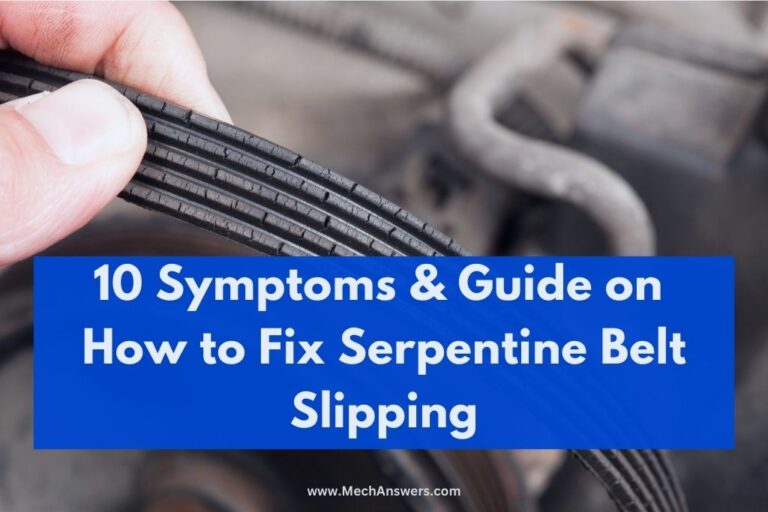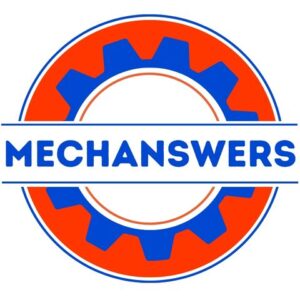
How to Fix a Slipping Serpentine Belt: A Comprehensive Guide
A slipping serpentine belt is a common automotive problem that can cause a variety of issues, from reduced power steering and air conditioning performance to a complete breakdown. The serpentine belt is responsible for driving many essential components in your engine, including the alternator, power steering pump, air conditioning compressor, and water pump. When it slips, these components may not function properly, leading to a range of problems.
Fortunately, fixing a slipping serpentine belt is often a straightforward process that can be completed at home with basic tools and a little know-how. This comprehensive guide will walk you through the steps involved in diagnosing and repairing a slipping serpentine belt, helping you get your car back on the road in no time.
Understanding the Serpentine Belt
Before we dive into the troubleshooting and repair process, it’s essential to understand the role of the serpentine belt and the reasons why it might slip. The serpentine belt is a long, winding belt made of rubber and reinforced with fabric. It wraps around various pulleys attached to the engine’s components, transmitting power from the crankshaft to these components.
Over time, the serpentine belt can wear out due to heat, friction, and exposure to chemicals. This wear can cause the belt to stretch, crack, or become glazed, reducing its ability to grip the pulleys effectively. Additionally, issues with the pulleys themselves, such as misalignment or worn bearings, can also contribute to belt slippage.
Symptoms of a Slipping Serpentine Belt
Recognizing the symptoms of a slipping serpentine belt is crucial for early detection and prevention of more serious problems. Here are some common signs to watch out for:
- Squealing or chirping noise: This is often the most noticeable symptom. The noise is typically louder when the engine is cold or when accessories like the air conditioning or power steering are in use.
- Reduced power steering: If the serpentine belt is slipping, the power steering pump may not receive enough power, leading to a stiff or difficult steering feel.
- Weak or no air conditioning: A slipping belt can prevent the air conditioning compressor from functioning correctly, resulting in reduced cooling performance or a complete loss of air conditioning.
- Overheating: In some cases, a slipping serpentine belt can affect the water pump’s ability to circulate coolant, leading to engine overheating.
- Dim headlights: The alternator, responsible for charging the battery and powering electrical components, may not function correctly if the serpentine belt is slipping, causing dim headlights or other electrical issues.
- Battery warning light: If the alternator is not charging the battery properly, the battery warning light on the dashboard may illuminate.
- Visible belt damage: Inspecting the belt for cracks, fraying, glazing, or missing chunks can provide a clear indication of its condition.
Tools and Materials Needed
Before you begin the repair process, gather the necessary tools and materials. Here’s a list of items you’ll likely need:
- New serpentine belt: Purchase a replacement belt that matches the specifications for your vehicle.
- Wrench or socket set: You’ll need these to loosen and tighten the belt tensioner.
- Belt tensioner tool: This tool helps to relieve tension on the belt, making it easier to remove and install.
- Inspection mirror: This can be helpful for inspecting the belt and pulleys in hard-to-reach areas.
- Gloves: Protect your hands from dirt and grease.
- Safety glasses: Protect your eyes from debris.
- Pen and paper or a smartphone: To take notes and photos of the belt routing.
- Pulley alignment tool (optional): This tool can help ensure that the pulleys are properly aligned.
- Cleaning supplies: To clean the pulleys and surrounding area.
Step-by-Step Guide to Fixing a Slipping Serpentine Belt
Now that you have the necessary tools and materials, follow these steps to fix a slipping serpentine belt:
1. Safety First:
- Park your vehicle on a level surface and engage the parking brake.
- Turn off the engine and remove the key from the ignition.
- Allow the engine to cool down completely before working on it.
2. Locate the Serpentine Belt:
- Open the hood of your vehicle and locate the serpentine belt. It’s usually located at the front of the engine and wraps around several pulleys.
- Refer to your vehicle’s repair manual or a diagram online to identify the specific routing of the belt around the pulleys.
3. Document the Belt Routing:
- Before removing the old belt, take detailed notes or photos of its routing around the pulleys. This will be crucial for installing the new belt correctly.
- Pay close attention to the order in which the belt passes around each pulley.
4. Relieve the Belt Tension:
- Locate the belt tensioner pulley. This pulley is spring-loaded and designed to maintain tension on the belt.
- Using a wrench or socket set, apply leverage to the tensioner pulley to relieve the tension on the belt. Some vehicles may require a special belt tensioner tool for this purpose.
- As you relieve the tension, carefully remove the old belt from the pulleys.
5. Inspect the Pulleys:
- Once the old belt is removed, inspect each of the pulleys for signs of wear, damage, or misalignment.
- Check for cracks, chips, or excessive wear on the pulley surfaces.
- Spin each pulley by hand to check for smooth rotation and any signs of bearing noise or resistance.
- If you suspect a pulley is misaligned, use a pulley alignment tool to verify its alignment.
6. Clean the Pulleys:
- Use a clean cloth and some degreaser or brake cleaner to clean the surfaces of the pulleys.
- Remove any dirt, grease, or debris that may be present.
7. Install the New Serpentine Belt:
- Refer to your notes or photos of the old belt routing and carefully install the new belt around the pulleys, following the same path.
- Ensure that the belt is properly seated in the grooves of each pulley.
- Double-check the routing to make sure it matches your documentation.
8. Release the Belt Tension:
- Using the wrench or socket set (or the belt tensioner tool), carefully release the tension on the tensioner pulley.
- As you release the tension, ensure that the new belt remains properly seated on all of the pulleys.
9. Verify Belt Alignment:
- Once the belt is installed and the tension is released, visually inspect the belt to ensure that it is properly aligned on all of the pulleys.
- Make sure the belt is not twisted or rubbing against any components.
10. Start the Engine and Test:
- Start the engine and let it run for a few minutes.
- Listen for any unusual noises, such as squealing or chirping.
- Check the operation of the power steering, air conditioning, and other accessories to ensure they are functioning properly.
11. Re-inspect the Belt:
- After running the engine for a few minutes, turn it off and re-inspect the belt.
- Check for any signs of slippage, misalignment, or damage.
- If you notice any issues, re-adjust the belt as needed.
Troubleshooting Tips
- Squealing noise persists: If the squealing noise persists after installing a new belt, it could be due to a misaligned pulley, a worn pulley bearing, or excessive belt tension.
- Belt keeps slipping: If the belt continues to slip, even after replacing it, it could be due to a faulty tensioner, a misaligned pulley, or an accessory that is putting excessive strain on the belt.
- Difficulty removing or installing the belt: If you’re having difficulty removing or installing the belt, make sure you’re using the correct tools and applying enough leverage to the tensioner pulley.
Conclusion
Fixing a slipping serpentine belt is a manageable task for most car owners. By following these steps, you can diagnose the problem, replace the belt, and ensure that your vehicle’s essential components are functioning correctly. Remember to prioritize safety, take your time, and consult your vehicle’s repair manual or a qualified mechanic if you’re unsure about any aspect of the process. Regular maintenance and inspection of your serpentine belt can help prevent future problems and keep your car running smoothly.
